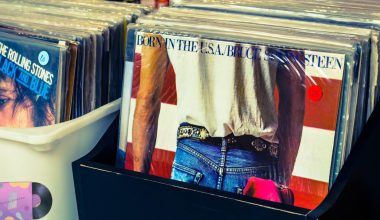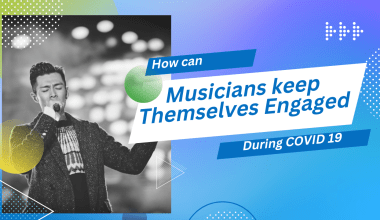The music industry business model has evolved significantly over the years, influenced by technological advancements, changes in consumer behavior, and the rise of digital platforms. This blog will delve into the structure, key players, revenue streams, and the impact of digital transformation on the music industry. By the end of this guide, you’ll have a comprehensive understanding of how the music industry operates and how artists, producers, and other stakeholders earn their livelihoods.
The Traditional Music Industry Business Model
Key Players
The traditional music industry business model revolves around several key players, each with distinct roles:
- Artists and Bands: The creators of music, who are the foundation of the music industry. They write, compose, and perform songs.
- Record Labels: Companies that sign artists, finance recordings, and manage distribution and promotion. Record labels are critical in helping artists reach a broader audience.
- Music Publishers: Handle the rights and royalties of songwriters and composers. They ensure that composers get paid when their music is used commercially.
- Managers and Agents: Represent artists and negotiate contracts. They manage the business aspects of an artist’s career, allowing artists to focus on their creative work.
- Promoters and Venues: Organize live performances and tours, ensuring that artists can perform in front of live audiences, which is a significant revenue stream.
Revenue Streams
Historically, the primary revenue streams in the music industry business model included:
- Record Sales: Revenue from selling physical albums, tapes, and CDs. This was once the main income source for artists and record labels.
- Publishing Royalties: Earnings from the use of compositions in various formats, including radio play, TV, and film.
- Live Performances: Income from concerts and tours. Performing live allows artists to connect with fans and generate substantial income.
- Merchandising: Sales of branded merchandise like T-shirts and posters. Merchandising can be a lucrative side business for artists.
- Licensing: Fees from using music in movies, TV shows, and advertisements. Licensing deals can provide significant revenue, especially for well-known songs.
The Digital Revolution
Impact on Distribution
The advent of the internet and digital technologies revolutionized the music industry business model. Digital distribution platforms like iTunes, Spotify, and Apple Music transformed how music is consumed and distributed.
- Streaming Services: Platforms that allow users to listen to music online. Streaming has become the dominant way people consume music today.
- Digital Downloads: Purchase and download of music files. While not as popular as streaming, digital downloads still provide revenue for artists and labels.
New Revenue Streams
The digital era introduced new revenue streams into the music industry business model:
- Streaming Royalties: Payments to rights holders based on the number of streams. Although the payout per stream is small, the large volume of streams can add up.
- Digital Sales: Revenue from selling digital tracks and albums. Artists can sell their music directly to fans through platforms like Bandcamp.
- Sync Licensing: Earnings from licensing music for use in digital media. This includes music used in video games, YouTube videos, and more.
Challenges and Adaptations
The shift to digital has brought challenges, such as piracy and lower per-unit revenue. However, it has also allowed artists to reach a global audience more easily. Record labels and artists have had to adapt their strategies to thrive in the digital landscape.
The Role of Record Labels Today
Adapting to Change
Record labels have adapted to the changing music industry business model by embracing digital technologies and diversifying their services. Today, labels are involved in:
- Digital Marketing: Promoting artists through social media and digital campaigns. This allows for targeted advertising and direct fan engagement.
- Content Creation: Producing music videos and other multimedia content. High-quality content can enhance an artist’s brand and reach.
- Data Analytics: Using data to understand consumer preferences and tailor marketing strategies. Data-driven decisions can improve marketing efficiency and effectiveness.
Revenue Sharing
In the current music industry business model, record labels typically operate on a revenue-sharing basis with artists. Contracts often include:
- Royalty Splits: Division of earnings from music sales and streams. The exact split depends on the contract but typically favors the label.
- 360 Deals: Agreements where labels receive a share of all artist revenue streams, including touring and merchandise. These deals can provide artists with more comprehensive support but also require them to share more of their income.
Independent Artists and DIY Model
Rise of Independence
The digital age has empowered artists to operate independently, bypassing traditional record labels. The DIY music industry business model allows artists to retain control over their careers and earnings.
Tools and Platforms
Independent artists utilize various tools and platforms to manage their careers:
- Social Media: For marketing and fan engagement. Platforms like Instagram, Twitter, and TikTok allow artists to connect directly with their audience.
- Crowdfunding: Raising funds directly from fans for projects. Websites like Kickstarter and Patreon provide artists with the financial support needed to create music without traditional label backing.
- Direct-to-Fan Sales: Selling music and merchandise through personal websites. This model allows artists to keep a larger share of the revenue.
Benefits and Challenges
The DIY model offers several benefits, including creative control and higher profit margins. However, it also presents challenges, such as the need for strong business skills and the burden of handling all aspects of a music career independently.
Successful Examples of DIY Artists
- Macklemore & Ryan Lewis: This duo famously released their album “The Heist” independently, achieving massive success without a major label. Their success story highlights the potential of the DIY approach in the music industry business model.
- Lindsey Stirling: A violinist and dancer who gained fame through YouTube, Lindsey Stirling built a successful career independently by leveraging social media and digital platforms to reach her audience.
The Future of the Music Industry Business Model
Technological Advancements
Emerging technologies continue to shape the music industry business model:
- Blockchain: For transparent royalty distribution and rights management. Blockchain can ensure that artists get paid fairly and quickly, reducing the risk of disputes and delays in payment.
- AI and Machine Learning: Enhancing music recommendation and discovery. These technologies can help artists reach new audiences and tailor their marketing strategies more effectively.
New Business Models
As technology evolves, new business models are emerging. For example, subscription-based platforms like Spotify and Apple Music offer unlimited access to music for a monthly fee, changing the way consumers pay for music. Additionally, virtual reality (VR) and augmented reality (AR) are starting to play a role in live music experiences, offering new ways for artists to engage with fans.
Challenges and Opportunities
The future music industry business model will face challenges and opportunities:
- Piracy: Ongoing battle against illegal downloads and streams. Although less prevalent than in the past, piracy still affects the industry and requires continuous innovation in anti-piracy technologies.
- Monetization: Finding sustainable ways to monetize music in the digital age. This includes exploring new revenue streams and maximizing existing ones, such as through merchandise, exclusive content, and fan clubs.
- Global Reach: Leveraging technology to reach global audiences. The internet allows artists to connect with fans worldwide, but navigating different markets can be complex and requires a deep understanding of local cultures and preferences.
The Role of Innovation
Innovation will be key to addressing these challenges and seizing new opportunities. The industry must continue to adapt to changing technologies and consumer behaviors to thrive.
Emerging Trends
- NFTs (Non-Fungible Tokens): NFTs have become a buzzword in the music industry, offering a new way for artists to monetize their work. Artists can sell unique digital assets, such as exclusive songs, artwork, or concert tickets, directly to fans.
- Direct Artist-to-Fan Engagement: Platforms like Patreon and OnlyFans allow artists to offer exclusive content to their most dedicated fans. This model not only generates revenue but also builds a stronger, more personal connection between artists and their audience.
- Virtual Concerts: The COVID-19 pandemic accelerated the adoption of virtual concerts, which have become a viable revenue stream. Platforms like Fortnite and Roblox have hosted virtual performances, attracting millions of viewers and opening new possibilities for live music.
Strategies for Success in the Modern Music Industry
Building a Strong Online Presence
- Social Media Marketing: Engaging with fans on platforms like Instagram, Twitter, and TikTok. Consistent posting, interactive content, and direct fan engagement are crucial for maintaining a loyal fan base.
- Content Creation: Regularly creating and sharing high-quality content such as music videos, behind-the-scenes footage, and live streams. This keeps fans engaged and helps attract new listeners.
- Website and SEO: Having a professional website optimized for search engines. This serves as a hub for all your music, news, tour dates, and merchandise. SEO optimization ensures that potential fans can easily find your site.
Leveraging Digital Tools
- Analytics Tools: Utilizing tools like Google Analytics and social media insights to track fan engagement and understand audience demographics. This data helps in making informed marketing decisions.
- Email Marketing: Building an email list and sending regular newsletters to keep fans informed about new releases, tours, and exclusive offers.
- Online Merchandising: Setting up an online store to sell merchandise directly to fans. This can be a significant revenue stream and a way to deepen fan loyalty.
Effective Monetization Strategies
- Streaming Optimization: Ensuring your music is available on all major streaming platforms and using playlist pitching services to increase streams.
- Crowdfunding and Memberships: Using platforms like Patreon, Kickstarter, or GoFundMe to raise funds for projects or offer exclusive content to subscribers.
- Live Performances and Virtual Concerts: Organizing both live and virtual concerts. Live performances remain a significant revenue source, while virtual concerts can reach a global audience.
Networking and Collaboration
- Industry Networking: Building relationships with other artists, producers, and industry professionals. Networking can lead to collaborations, tours, and other opportunities.
- Collaborations: Working with other artists to reach new audiences. Collaborative projects can introduce your music to the fans of your collaborators.
- Music Conferences and Festivals: Attending industry events to learn, network, and showcase your music. These events are valuable for staying up-to-date with industry trends and making important connections.
Legal and Financial Management
- Understanding Contracts: Being aware of the terms and conditions in contracts and seeking legal advice when necessary. Understanding your rights and obligations is crucial in the music business.
- Rights Management: Ensuring that all your music is properly registered with the necessary rights organizations to receive royalties.
- Financial Planning: Keeping track of all income and expenses, and working with financial advisors to manage earnings and plan for taxes.
Adapting to Change
- Staying Updated: Keeping up with the latest industry trends and technological advancements. The music industry is constantly evolving, and staying informed is essential.
- Flexibility: Being willing to adapt your strategies as the market changes. Flexibility can mean the difference between success and failure in a rapidly changing industry.
- Continuous Learning: Investing in your education by taking courses in music production, marketing, and business management. Continuous learning helps you stay competitive.
Conclusion
The music industry business model is a complex and ever-evolving ecosystem. Understanding its structure, key players, and revenue streams is crucial for anyone involved in the music business. As technology continues to advance, the industry will undoubtedly face new challenges and opportunities, shaping the future of how music is created, distributed, and consumed.
Artists, whether independent or signed to a label, must stay informed about industry trends and adapt their strategies accordingly. The digital age has democratized music distribution, allowing more artists to reach global audiences, but it also requires a new set of skills and strategies to succeed.
By embracing innovation and staying adaptable, artists and industry professionals can navigate the changing landscape and thrive in the modern music business.
In conclusion, the music industry business model is characterized by a dynamic interplay of traditional practices and modern innovations. The rise of digital platforms has transformed how music is distributed and monetized, offering both challenges and opportunities. Whether through streaming, social media, or new technologies like blockchain and AI, the future of the music industry will continue to evolve. Success in this industry requires a deep understanding of these changes, strategic thinking, and a willingness to adapt. By leveraging the tools and strategies outlined in this guide, artists and industry professionals can position themselves for success in the ever-changing world of music.
For further reading, explore these related articles:
- How to Get into the Music Industry as a Producer
- Exploring the Independent Music Industry in India
- The Crucial Role of Song Videos in the Music Industry
For additional resources on music marketing and distribution, visit Deliver My Tune.






